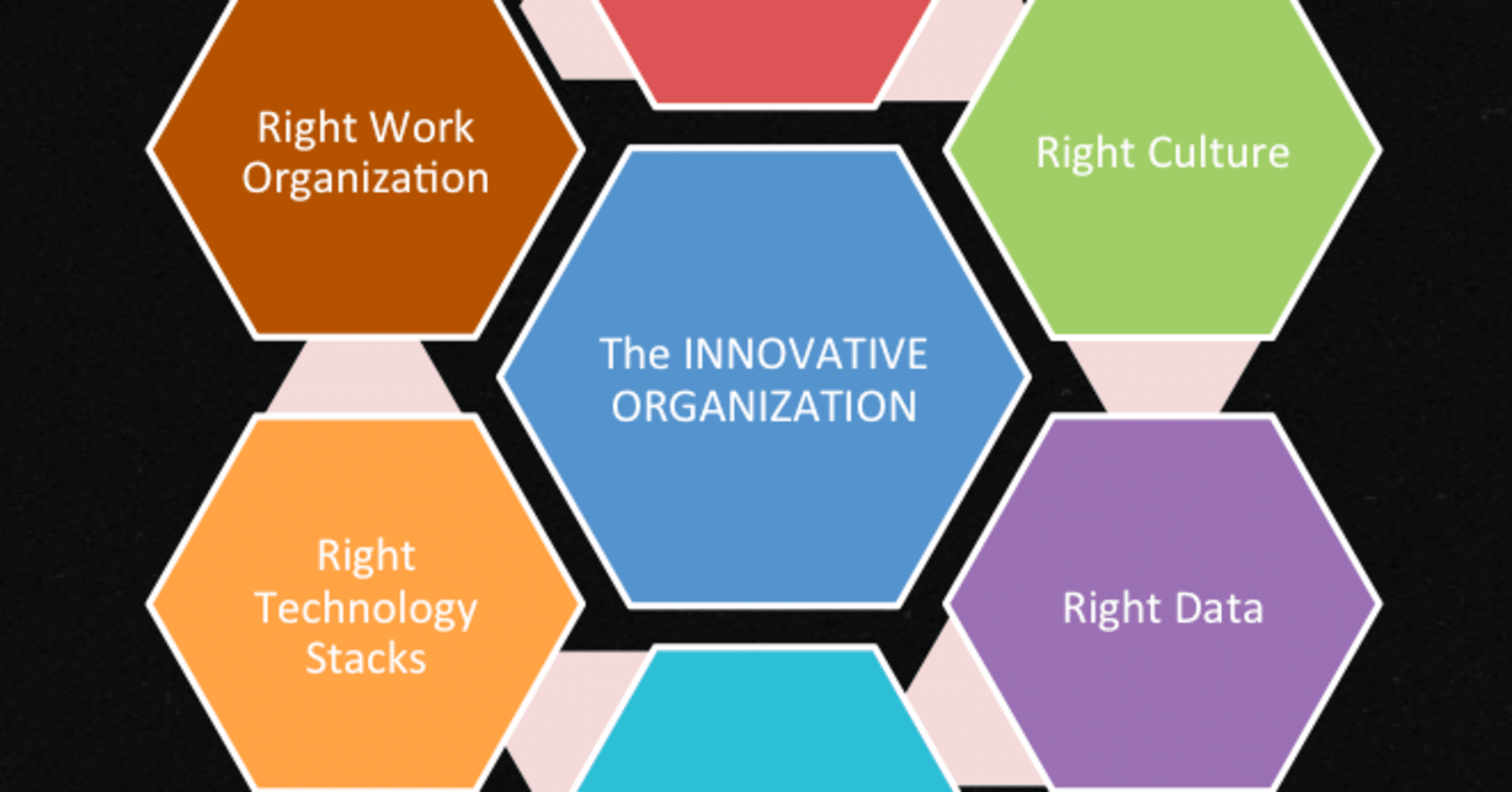How AI will make corporations more humane and super-linearly innovative (Part II)
- by 7wData

Fast-innovating startups are too small and slow-innovating corporates too big. When startups grow they become like big corporates; their innovation slows down and their dynamic culture dilutes. Processes and compliance take over. Breaking things is replaced by ticking boxes. That’s why I think the problem with innovation is a problem of scale. And scale can only emerge by rethinking business organization. How can we scale organizations so they retain their startup agility and avoid the mass corporate extinction event? If you are a business leader transforming your organization should be your top agenda item. But transform how?
Let me suggest that in a digital economy, where people and things become increasingly interconnected, the innovative organization is made up of six fundamental pillars: right strategy, right culture, right work organization, right technology stacks, right data and right cybersecurity. Each of these pillars needs special, in-depth treatment. But for the purpose of this article I want to focus on two of the pillars – right technology stacks and right work organization – for they are the two that distinguish the innovative organization from its predecessors, and also instrumental to scaling innovation.
The first industrial revolution made humans into robots. Yes, you have read this sentence correctly. For the past two hundred years we humans adapted our work behaviour around machines. The very idea of a process comes from traditional assembly line and process manufacturing, where things need to happen in a sequence. Allowing for things to happen spontaneously and chaotically goes against the concept of “management”, which is at the heart of current business organization. Processes, managers, loops, repetition, rules, compliance, are the building blocks of traditional organizations. Workers going to work every day, staying at work for a specified period of time, vacationing only a few days per year, their output measured as if they were all the same, identical copies, robots. All these behaviours and methods have served us well for nearly two centuries, but now they are in dire need of reinvention.
In their forthcoming book “Surge: Navigating the digital tsunami” digital transformation experts Brad Murphy and Carol Mase propose a phased approach to making businesses fit for the digital era. Each phase liberates people from productivity-depressing processes and allows them to collectively engage in value-producing networks that innovate, not only around products and services but in everything that is required to make the business successful.
The nodes of these networks have access to technology stacks that reinvent the idea of corporate information technology. And here’s an important point: IT must cease to be a cost centre and instead become the means of innovation. To become so it requires the courageous embrace of the cloud. “Cloud-native organizations” accessing software micro-services in a cloud-based ecosystem environment means that teams can quickly build composable systems, experiment and fail fast, and thus significantly improve the delivery of the innovation cycle.
[Social9_Share class=”s9-widget-wrapper”]
Upcoming Events
Evolving Your Data Architecture for Trustworthy Generative AI
18 April 2024
5 PM CET – 6 PM CET
Read MoreShift Difficult Problems Left with Graph Analysis on Streaming Data
29 April 2024
12 PM ET – 1 PM ET
Read More




